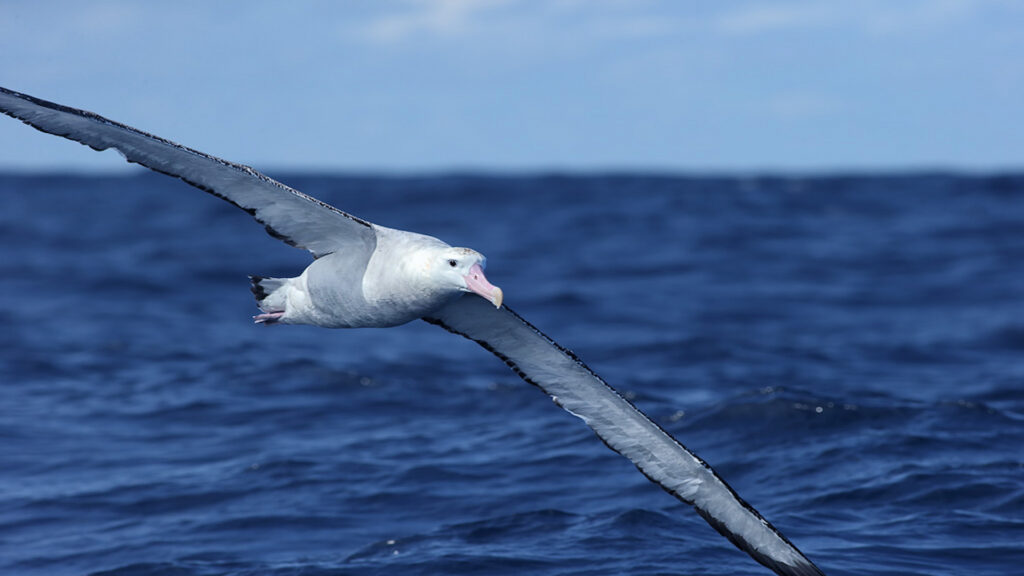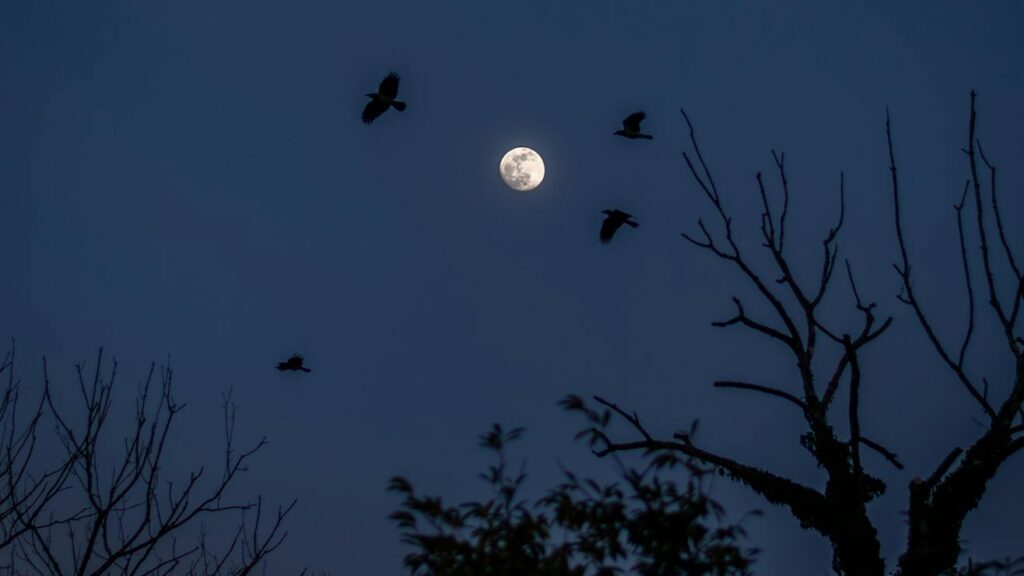Birds, masters of long-distance travel, have fascinated scientists and nature enthusiasts alike with their remarkable ability to navigate across continents and oceans with pinpoint accuracy. Among their most astonishing navigational tools is celestial navigation—using the stars as a map in the night sky. This ancient technique, perfected over millions of years of evolution, allows birds to undertake journeys that would be challenging even for humans with modern technology. From tiny warblers to mighty albatrosses, many birds look to the heavens to guide their way through the darkness, creating one of nature’s most spectacular phenomena. Let’s explore the fascinating world of avian celestial navigation and uncover how these feathered travelers read the stars.
The Remarkable Discovery of Avian Star Navigation

The revelation that birds use stars for navigation came primarily through the pioneering work of German ornithologist Gustav Kramer in the 1950s. Through innovative experiments with migratory birds in planetariums, Kramer demonstrated that birds could orient themselves using artificial star patterns. This groundbreaking research was later expanded by Stephen Emlen, who used Indigo Buntings in planetarium studies to conclusively prove that birds were specifically using star patterns for directional information. These remarkable experiments showed that when the artificial night sky was rotated, the birds would adjust their preferred direction accordingly, confirming that stellar cues were critical to their navigational abilities. This discovery opened an entirely new field of study in animal navigation and challenged our understanding of avian cognitive abilities.
How Birds Perceive Star Patterns

Unlike human navigators who might use specific stars like Polaris (the North Star), birds appear to navigate by recognizing entire star patterns or constellations. Research suggests that birds don’t rely on individual stars but instead create a mental map based on the relationship between groups of stars. This celestial map is centered around the north celestial pole, which remains relatively fixed while other stars appear to rotate around it during the night. Remarkably, birds can detect this celestial rotation point even without seeing Polaris itself, simply by observing the circular movement of surrounding stars. Their visual systems are highly specialized for low-light conditions, allowing them to perceive stellar patterns even on partially cloudy nights or during twilight periods when humans might struggle to see stars clearly.
Star Navigation Versus Other Navigational Methods

While star navigation is an impressive tool in birds’ arsenals, it represents just one component of their multi-faceted navigational system. During daylight hours, birds primarily use the sun’s position and their internal circadian rhythm to determine direction. Many species also rely on Earth’s magnetic field, detecting it through specialized cells containing magnetite or through light-dependent chemical reactions in their eyes. Geographic landmarks, olfactory cues (smells), and even infrasound (low-frequency sounds) provide additional navigational information, creating a redundant system that ensures successful migration even when one method becomes unavailable. This multi-sensory approach to navigation demonstrates evolutionary adaptability, allowing birds to navigate through changing conditions, including cloudy nights when stars aren’t visible.
Innate Versus Learned Star Navigation

One of the most fascinating aspects of avian celestial navigation is the question of whether this ability is innate or learned. Research with hand-raised birds, particularly Indigo Buntings, has revealed that young birds are born with an instinctive tendency to orient themselves using stellar rotation, but they must observe the night sky during a critical development period to calibrate their internal map. When young buntings were raised under a planetarium sky that rotated around a different axis than normal, they developed an altered sense of direction based on this artificial sky. This demonstrates a remarkable combination of genetic programming and environmental learning, allowing birds to adapt their navigational systems to their specific circumstances. The precise timing of this learning period varies between species but typically occurs during the first few months of life.
Species Differences in Stellar Navigation

Not all bird species rely equally on stellar navigation, with significant variations corresponding to their migratory patterns and evolutionary history. Nocturnal migrants like thrushes, warblers, and buntings show the strongest dependence on star navigation, as they conduct most of their migratory flights under the night sky. Seabirds like albatrosses and shearwaters, which travel vast oceanic distances without landmarks, also heavily utilize celestial cues including stars. In contrast, diurnal migrants such as hawks and eagles rely more on thermals and visual landmarks, using stars primarily as supplementary guidance. Some non-migratory species show little ability to navigate by stars, suggesting this trait evolved specifically to support long-distance movement. The complexity and refinement of star navigation abilities generally correlate with the difficulty and length of a species’ typical migration route.
The Night Sky Orientation Experiments

The most compelling evidence for avian star navigation comes from elegant experiments using planetariums and manipulated night skies. In classic studies, migratory birds were placed in circular arenas called Emlen funnels, with ink-coated sides that recorded the birds’ attempted direction of movement based on their foot scratches. When shown a natural planetarium sky, the birds oriented in their expected migratory direction. When researchers manipulated the stellar patterns—for instance, by rotating the artificial night sky or changing which star appeared at the center of rotation—birds adjusted their orientation accordingly. In perhaps the most telling experiment, when birds were shown a sky with stars arranged randomly without a clear center of rotation, they became disoriented and moved in random directions. These controlled experiments provided irrefutable evidence that birds were specifically using stellar rotation patterns for directional information.
Star Navigation and Light Pollution Challenges

The increasing prevalence of artificial light pollution presents a significant threat to birds’ ability to navigate by stars. Urban sky glow can obscure celestial patterns, potentially disorienting migratory birds and leading them off course. Studies have shown that birds flying over brightly lit cities can become confused, sometimes circling illuminated structures until exhaustion or colliding with buildings. This phenomenon is particularly pronounced during foggy or cloudy conditions when artificial light reflects off moisture particles in the air. Light pollution can also disrupt birds’ internal clocks and trigger premature migratory restlessness, causing them to depart at suboptimal times. Conservation efforts including “lights out” programs during peak migration seasons and the use of bird-friendly lighting designs have shown promise in mitigating these effects, though addressing light pollution on a global scale remains a significant challenge.
The Stellar Compass in Avian Brains

The neurological basis for star navigation in birds involves specialized brain regions dedicated to processing celestial information. The avian hippocampus, larger in migratory species than non-migratory ones, plays a crucial role in storing spatial memory, including stellar maps. Cluster N, a region in the forebrain identified relatively recently, becomes highly active when birds process visual information from the night sky. This region appears connected to both visual processing areas and the hippocampus, functioning essentially as a specialized “star compass.” Interestingly, research has shown that Cluster N is more developed in nocturnal migrants than in diurnal migrants or non-migratory species, providing a direct neurological correlation with behavioral observations. The development of these neural structures occurs during the critical learning period when young birds first observe the night sky, creating permanent neural pathways that will guide them throughout their lives.
Comparing Bird Navigation to Ancient Human Seafaring

The stellar navigation techniques used by birds bear remarkable similarities to those developed independently by ancient human seafarers across multiple civilizations. Polynesian navigators, for instance, learned to read the positions of specific stars and constellations to maintain direction while voyaging thousands of miles across the open Pacific Ocean. Similarly, ancient Arab, Greek, and Viking mariners developed sophisticated understanding of stellar patterns to guide their vessels through the Mediterranean and North Atlantic. While humans needed to develop complex instruments like the astrolabe and sextant to refine these techniques, birds accomplish similar feats with their innate biological equipment. This parallel evolution of navigation techniques highlights how the night sky has served as a universal reference system for movement across Earth’s surface, transcending species boundaries and technological eras.
Star Navigation Across Different Migration Routes

Birds’ reliance on stellar navigation varies considerably depending on their typical migration routes and the challenges these routes present. Species crossing open oceans, like Arctic Terns making their epic journey from the Arctic to Antarctic and back, depend heavily on celestial navigation due to the absence of landmarks. Birds navigating along coastlines or mountain ranges may use stars primarily to maintain a general bearing while refining their path using topographic features. Interestingly, species that migrate along the north-south axis face different challenges than east-west migrants, as star patterns shift more dramatically when moving latitudinally than longitudinally. Research has shown that birds migrating across the equator must essentially learn two different celestial maps—one for the northern hemisphere and one for the southern hemisphere—as the visible constellations change dramatically between these regions, representing an extraordinary feat of cognitive flexibility.
Evolutionary Origins of Star Navigation

The ability to navigate by stars likely evolved gradually over millions of years as birds expanded their migratory ranges. Fossil and genetic evidence suggests that long-distance migration evolved multiple times independently across different bird lineages, with celestial navigation capabilities developing in parallel with these behavioral adaptations. The earliest migratory birds may have used simpler directional cues before developing the sophisticated star pattern recognition seen in modern species. Comparative studies across bird families have shown that the ancestors of today’s most accomplished stellar navigators likely began with shorter migrations that gradually extended as climate zones shifted during Earth’s glacial periods. This evolutionary pressure selected for increasingly refined navigational abilities, including enhanced night vision, specialized brain regions, and the cognitive capacity to memorize complex stellar patterns. Remarkably, similar celestial navigation abilities have evolved independently in other animal groups, including some insects and marine species, demonstrating convergent evolution toward this effective navigational solution.
Future Research and Technological Advances in Studying Star Navigation

The study of avian stellar navigation continues to advance with the development of new technologies that allow for more precise tracking and neural monitoring. Miniaturized GPS tags, some weighing less than a gram, now enable researchers to track individual birds throughout their entire migratory journeys, correlating their movements with specific celestial conditions on any given night. Functional magnetic resonance imaging (fMRI) and other brain imaging techniques provide unprecedented insight into the neural activity associated with celestial navigation in real-time. Some researchers are even developing “bird’s-eye view” cameras that can be temporarily mounted on larger migratory species to literally see what the birds see during nocturnal flights. Additionally, computational models increasingly simulate how birds might process stellar information, generating testable hypotheses about their navigational algorithms. As these technologies continue to develop, our understanding of the remarkable phenomenon of avian star navigation will undoubtedly deepen, potentially offering insights applicable to human navigation systems and artificial intelligence.
Conclusion

The ability of birds to navigate using stars represents one of nature’s most sophisticated adaptations—a perfect blend of innate programming and learned experience that guides these remarkable travelers across vast distances with impressive accuracy. This celestial navigation system, refined over millions of years of evolution, enables journeys that continue to inspire human awe and scientific inquiry. As we face a world of increasing light pollution and habitat fragmentation, understanding and protecting birds’ ability to read the night sky becomes increasingly important for conservation efforts. The stars that have guided countless generations of birds on their migratory journeys offer not just a practical navigation tool but a profound connection to the cosmos—a reminder that even the smallest songbird carries within it the ability to read the heavens in ways that humans have only relatively recently discovered for ourselves.
